Walking the Ignatian Camino
Part 2 of 2
Marian Shrines on the Camino
In May-June 2019 I walked the Ignatian Camino -- camino ignaciano -- in northern Spain. This walk is different from the caminos that go to Santiago de Compostela in the north-west of Spain, because the camino ignaciano goes east towards Barcelona. It starts in the Basque country (central-north Spain) at Loyola castle, and ends near the monastery of Montserrat at the town of Manresa.
The walk follows a journey made in 1522 by Ignatius of Loyola, founder of the Jesuits, during his conversion. In 1521 Ignatius had his leg broken by a cannonball during a battle in Pamplona. While recovering at home, Ignatius reflected on his life and decided he should make a pilgrimage to the Holy Land.
This long journey meant Ignatius needed to get to Barcelona and find a ship to Italy and beyond. Early in 1522 he set out from the family castle with a mule and two servants. He soon sent the servants home and would later shed his arms and his noble clothes.
Ignatius had a strong Marian devotion. This was part of Spanish Catholicism of the time, but deepened through his spiritual journey, and perhaps also because of the early loss of his own mother. The camino ignaciano passes through three Marian shrines which Ignatius visited. Those shrines are at Arantzazu, Zaragoza and Montserrat.
Arantzazu is close to Loyola. The pilgrim arrives on the second day after a strenuous climb over a steep and rocky hill. Our Lady of Arantzazu -- Our Lady of the Thornbush -- commemorates the appearance of Mary, in a thornbush, to a poor shepherd. Ignatius spent the night in prayer at the shrine.
Going from Arantzazu through the Basque hills, the pilgrim eventually comes into the Ebro river valley and the trail becomes flatter. The Latin word for Ebro is ‘Iber’, which is where the term ‘Iberia’, for the Spanish/Portuguese peninsula, comes from. The Ebro was a major trade route into central Spain.
About halfway along the Ebro valley is the city of Zaragoza. It has a central place in the Christian history of Spain and, in a way, is more important than the shrine of Spain’s patron saint at Compostela. At Zaragoza the mother of Jesus is said to have appeared to St James.
The story goes that St James had come to evangelise Spain but had little success. Disappointed, he decided to return home. As he prepared to go back down the Ebro, however, and set sail, Mary appeared to him, encouraging him to stay and keep working. Acts 12:2 tells us James was martyred by Herod Agrippa in Palestine but his shrine is in Compostela.
Apparently Mary was standing on a column when she appeared to James, so the massive cathedral shrine at Zaragoza is called Our Lady of the Pillar -- Nuestra Senora del Pilar. Pilar has become a frequent name among Spanish women.
I attended Mass at the shrine, but between the crowds and my fatigue, I can’t say it was a deeply spiritual experience. However, the story of the encounter of Mary and James speaks of the need for persistence and courage in following Christ and in the work of mission. Without that, Christianity in Spain would not have grown.
From Zaragoza I walked towards Catalonia, Montserrat and Manresa. On his journey Ignatius visited the famous Black Madonna at Montserrat. Montserrat -- ‘saw-tooth’ mountain -- is a remarkable block of stone in the landscape; a sacred mountain like Ruapehu, Aoraki, Hikurangi and others in Aotearoa. For many centuries the Benedictine monastery of Montserrat has been tucked into a high fold in its rock.
Catalonia has a history, language and nationalist movement. Activists from the movement were on trial during the time of my walk. The mountain and the monastery are also symbols of Catalan identity and faith. When the Barcelona football team wins a major trophy, the team brings it to the monastery to thank the Virgin.
The monastery – rebuilt various times – has the famous Black Madonna and child. The statue was not originally black, but she has darkened over time, perhaps partly from candle smoke. She presides in the basilica. The pilgrim on this camino comes to the monastery on the penultimate day of the walk, climbing steeply up the mountain from the plain below. The monastery is a major tourist attraction and during the day is full of day-trippers as well as pilgrims.
Ignatius came here on the feast of the Annunciation. Scrupulously, he took three days to write out his confession and received wise counsel from his confessor. He spent a night standing and kneeling before the Madonna, as a knight before his Lady. He laid his sword and dagger at the Virgin’s altar, leaving aside his old, military identity.
Ignatius also laid aside the clothes of his nobility, donating them to a beggar. He put on a sackcloth garment he had made, symbolising his desire to do penance for his past life and live in a new way. I didn’t have much of external significance to ‘lay down’, but this was a time to think and pray about what to let go of.
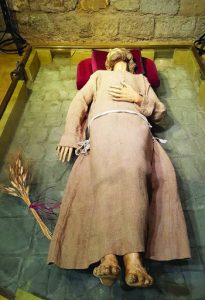
Statue of Ignatius inert/fainted from hunger in his penitential robe in the poorhouse where he initially stayed in Manresa
Ignatius left Montserrat to make his way to Barcelona. Perhaps he had been counselled to spend a few days in reflection and chose Manresa, 25 kilometres away, to do that. As it turned out, he spent 9 months there, and considered that time central to his spiritual formation and growth.
At various points in the Spiritual Exercises, Ignatius encourages a ‘colloquy’ -- a conversation -- with Mary, over things. These shrines gave me the chance to converse about the thorny parts of life (Arantzazu), about perseverance (Zaragoza), and about repentance and new beginnings (Montserrat).

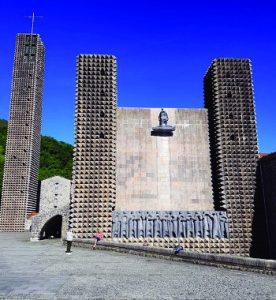
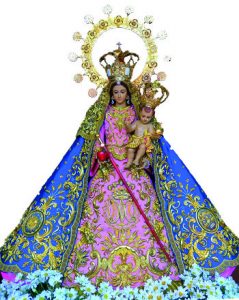
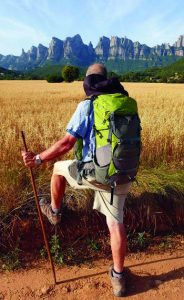
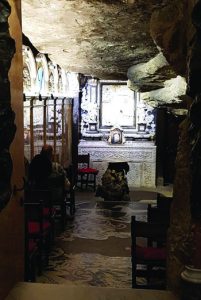
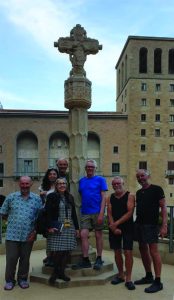
 Entries(RSS)
Entries(RSS)